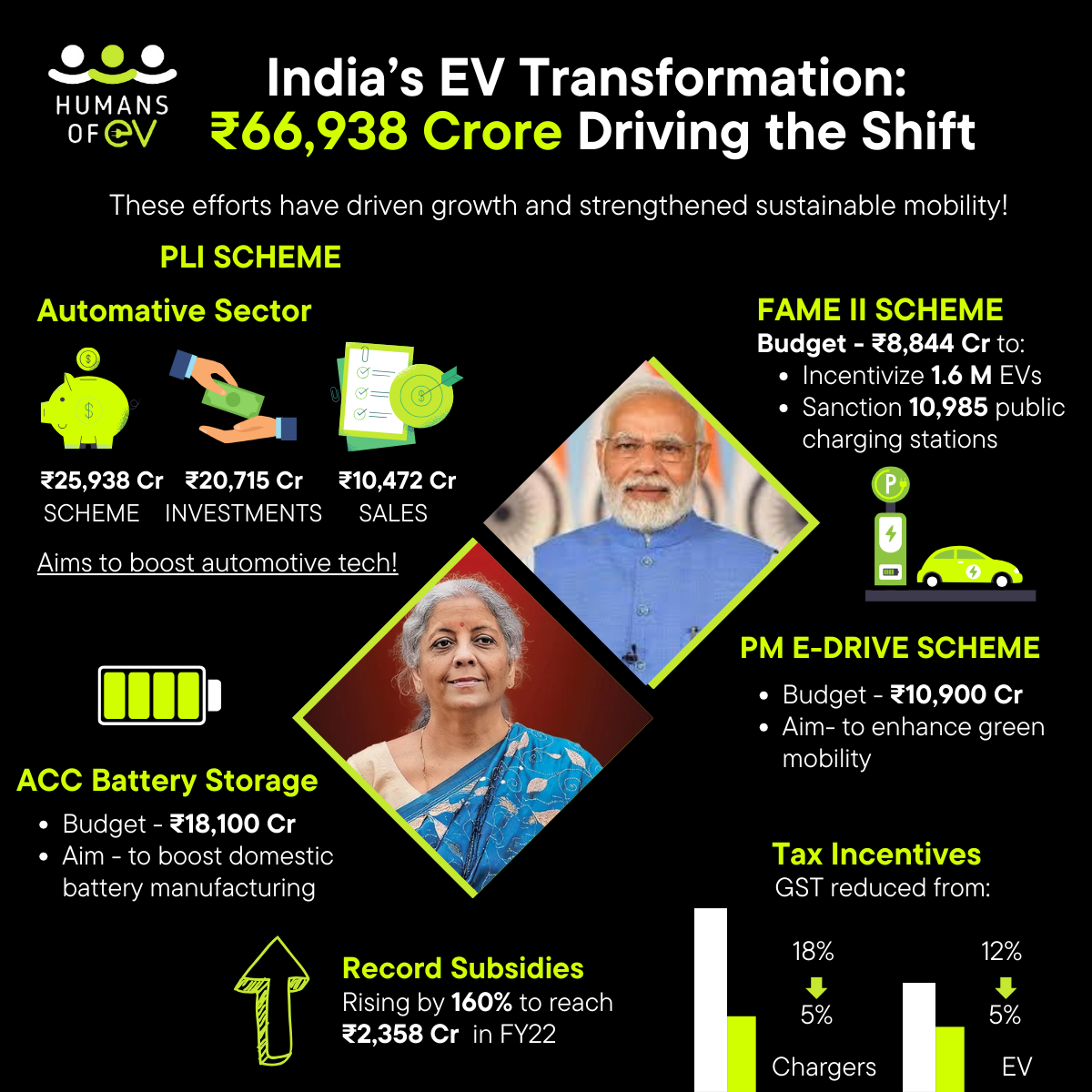
Over the past five years, India has invested a massive ₹66,938 crore in initiatives and policies to revolutionize its electric vehicle (EV) ecosystem. These efforts have fueled growth, reduced costs for consumers, and built a strong foundation for sustainable mobility. Here’s a closer look at the key programs and their impact:
1. FAME-II Scheme (2019-2024)
Launched in 2019, the Faster Adoption and Manufacturing of Hybrid and Electric Vehicles (FAME-II) scheme had a budgetary outlay of ₹10,000 crore. By October 2024, ₹8,844 crore had been spent, incentivizing over 1.6 million EVs, including two-wheelers, three-wheelers, four-wheelers, and buses. Additionally, 10,985 public EV charging stations were sanctioned, bolstering infrastructure for the growing EV population.
2. Production Linked Incentive (PLI) Scheme for Automotive Sector (2021-2026)
This ₹25,938 crore scheme was approved in 2021 to enhance the manufacturing of advanced automotive technologies, including EVs. As of September 2024, it had attracted investments worth ₹20,715 crore and generated incremental sales of ₹10,472 crore. The first incentive disbursements are scheduled for FY 2024-25.
3. PLI Scheme for Advanced Chemistry Cell (ACC) Battery Storage (2021-2026)
Approved in 2021 with an outlay of ₹18,100 crore, this initiative aims to build a competitive domestic battery manufacturing ecosystem. Advanced battery technology is critical for EV adoption, and this scheme is set to significantly reduce India’s dependence on imports.
4. PM E-Drive Scheme (2024-2026)
Launched in October 2024 with a budget of ₹10,900 crore, the PM E-Drive Scheme focuses on boosting green mobility and strengthening India’s EV manufacturing ecosystem. This program replaces the FAME-II scheme, gradually phasing out subsidies for electric four-wheelers and hybrids, with a sharper focus on building a self-sustaining EV industry.
5. Tax Incentives for EVs
The government has reduced GST on EVs from 12% to 5%, and on chargers from 18% to 5%. Additionally, states have been encouraged to waive road taxes on EVs, making them more affordable and reducing the initial purchase cost for consumers.
6. Record Subsidies
Subsidies for EVs in India have increased significantly, rising by 160% to reach ₹2,358 crore in FY22. This surge has been driven by growing consumer demand and supportive government policies.
Driving India’s Electrification Journey
India’s ambitious investments and policy measures are not just numbers—they represent a transformative shift toward sustainable transportation. The country is steadily building a robust EV ecosystem, paving the way for innovation, job creation, and reduced carbon emissions.
As the EV landscape continues to evolve, the question remains: how will you plug into this electrifying future?



